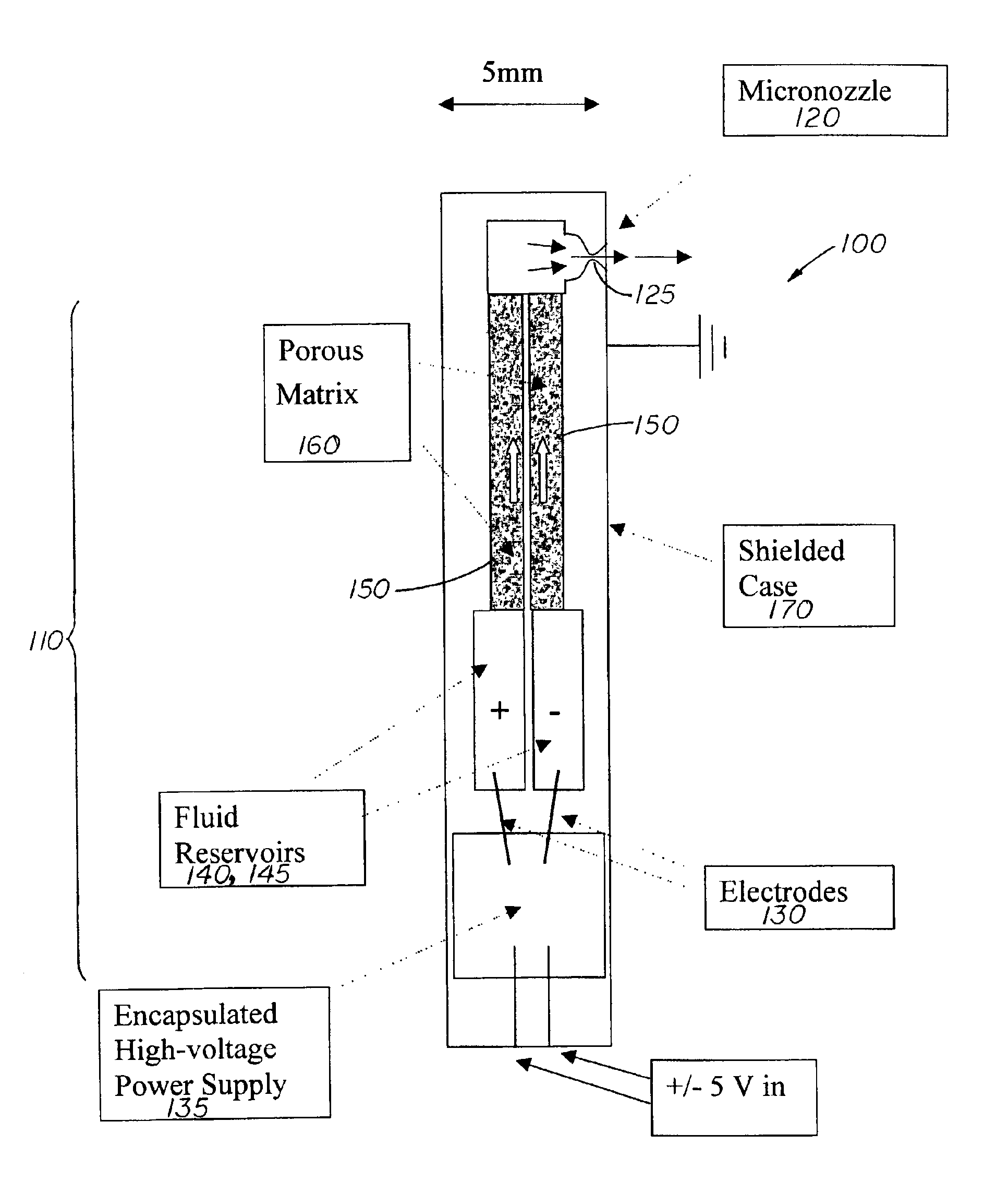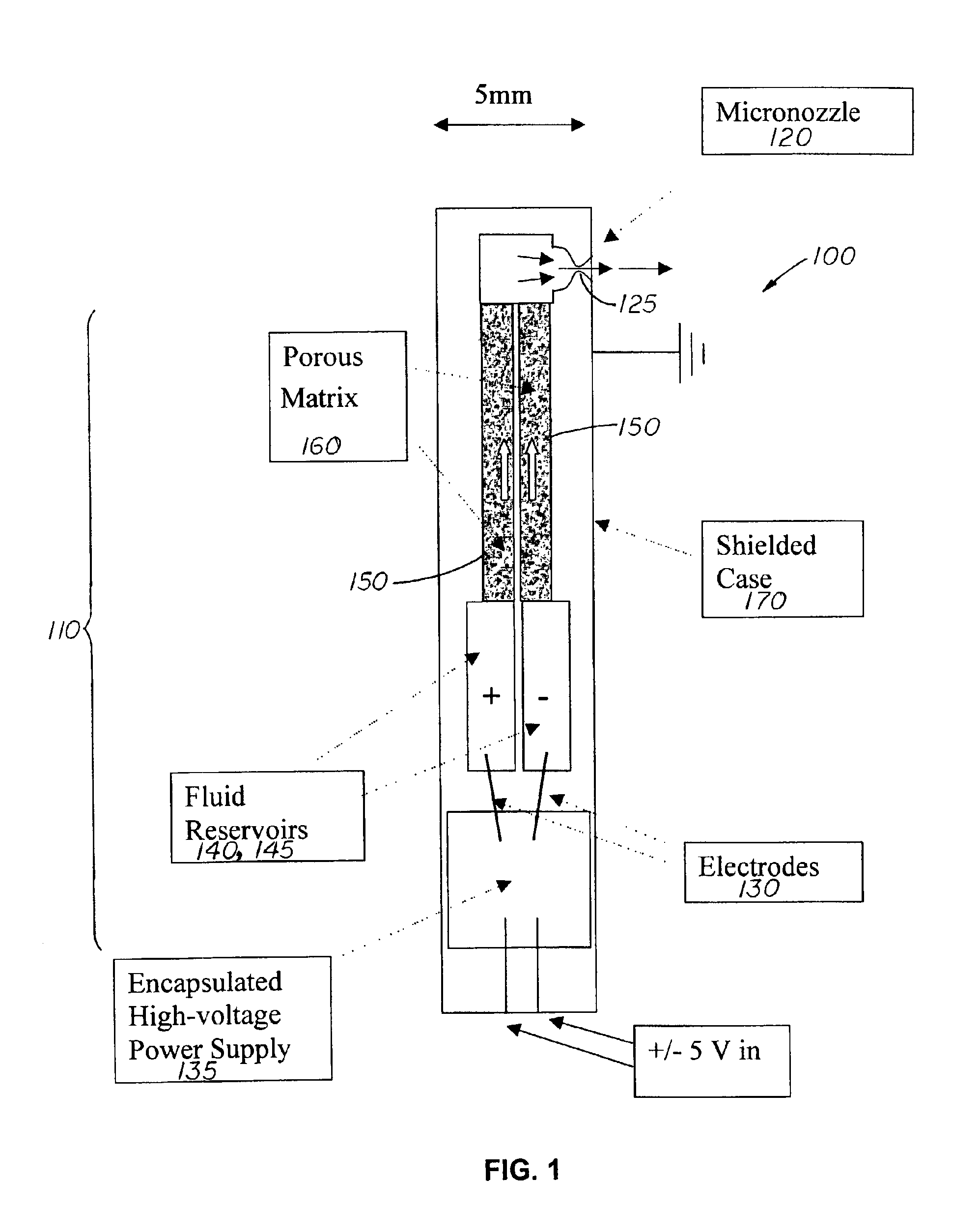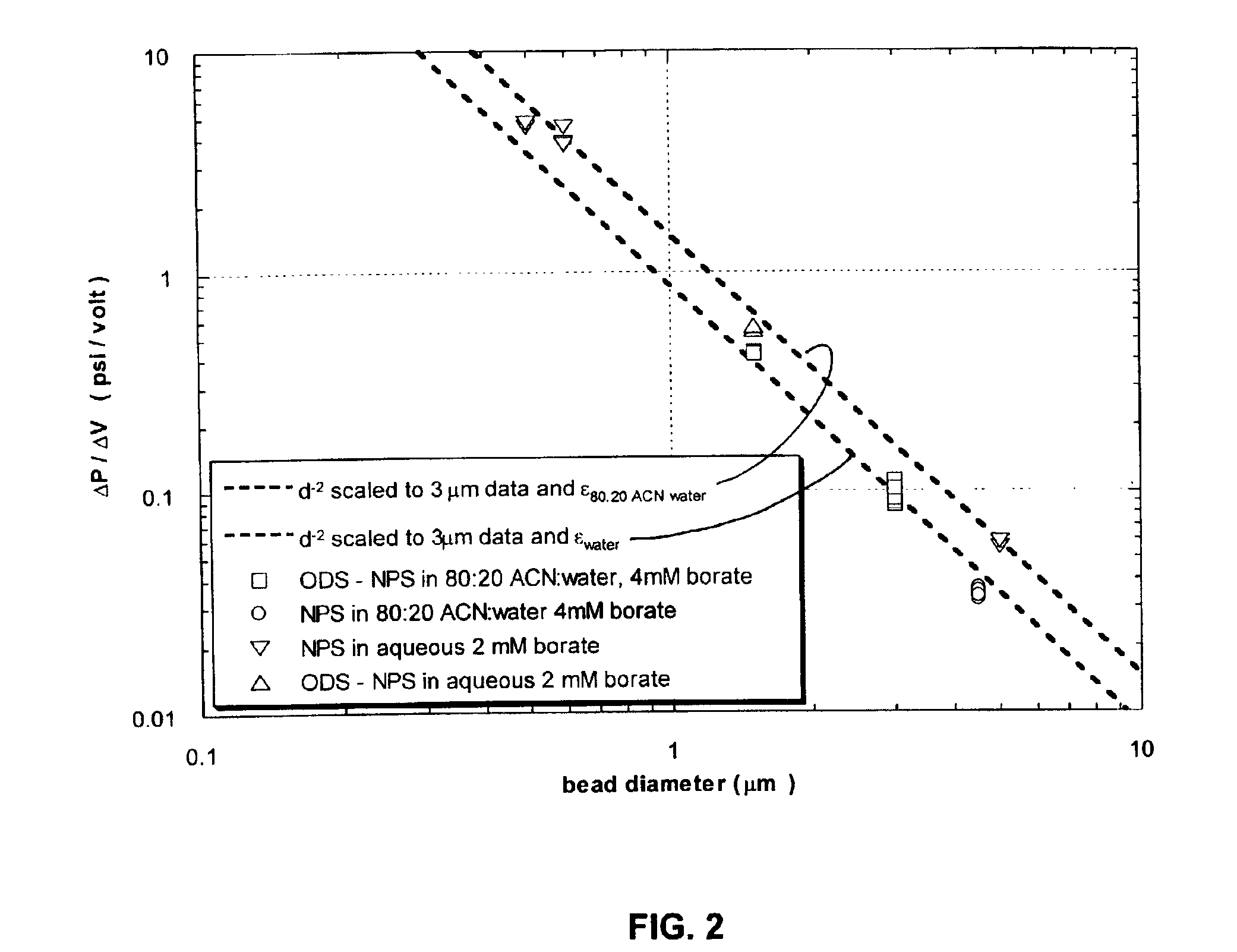Electrokinetically pumped high pressure sprays
a high-pressure spray and electrokinetic technology, applied in the direction of electroporation, spray discharge apparatus, electroporation, etc., can solve the problems of inability to adapt to clinical in situ gene therapy, inability to use single-cell microinjection, electroporation, etc., to achieve high pressure, improve the ability to address, and reduce the effect of toxicity
- Summary
- Abstract
- Description
- Claims
- Application Information
AI Technical Summary
Benefits of technology
Problems solved by technology
Method used
Image
Examples
Embodiment Construction
[0022]The present invention is directed to a device that integrates a high pressure electrokinetic pump (EKP) with a micro-nozzle for the delivery of a high pressure, low flow rate spray, including delivery of DNA or other biological materials into tissues. Because of its small size the device can be incorporated into an endoscope or catheter, thereby providing non-invasive access to difficult to reach tissues, such as intestinal epithelium or the left ventricle interior wall, for therapy.
[0023]In order to understand the invention better a brief description of the operation of an electrokinetic pump (EKP) is presented.
[0024]It has been demonstrated that it is possible to convert electric potential to hydrodynamic force and, by means of a process called electrokinetic pumping, to produce hydraulic pressures at least as great as 10,000 psi. The electrokinetic pump or EKP, comprises at least one tube or flow channel, that can be a capillary or micro-fabricated channel, forming a fluid ...
PUM
| Property | Measurement | Unit |
|---|---|---|
| velocities | aaaaa | aaaaa |
| pressure | aaaaa | aaaaa |
| diameter | aaaaa | aaaaa |
Abstract
Description
Claims
Application Information
 Login to View More
Login to View More - R&D
- Intellectual Property
- Life Sciences
- Materials
- Tech Scout
- Unparalleled Data Quality
- Higher Quality Content
- 60% Fewer Hallucinations
Browse by: Latest US Patents, China's latest patents, Technical Efficacy Thesaurus, Application Domain, Technology Topic, Popular Technical Reports.
© 2025 PatSnap. All rights reserved.Legal|Privacy policy|Modern Slavery Act Transparency Statement|Sitemap|About US| Contact US: help@patsnap.com



